I. The NEURC has imposed fines on 14 RES producers for failure to fulfil dispatcher commands to curtail generation
On 27 May 2020, the National Energy and Utility Regulatory Commission (“NEURC”) considered the matter of the violation of licensing conditions on electricity generation by 20 renewable energy source (“RES”) producers for non-fulfilment of dispatcher’s command to curtail generation.
The NEURC imposed fines of UAH 85,000 each on 14 RES producers and issued warnings to 6 other RES producers.
This is the first time when the NEURC brought RES producers to liability for their failure to fulfil dispatcher commands to curtail generation.
Background
The Ukrainian power grid is overloaded and its reliability is deteriorating, something caused by, among other factors, the lack of highly maneuverable capacity and energy storage systems which could be used as a means to balance the power system. Since March 2020, a significant surplus of electricity due to the decrease of consumption caused by COVID-19 was added to the list of existing problems in the power grid. Therefore, NPC Ukrenergo (the TSO), which is responsible for the stability of the electricity supply in the country, has been forced to curtail generation from solar and wind power plants to balance the power system.
However, RES producers do not receive compensation for the involuntary curtailment of generation, despite their right to such compensation being explicitly stipulated by law. According to article 68 of the Electricity Market Law, the cost of electricity not delivered due to execution of the TSO’s command to reduce the load must be compensated to RES producers under the rate of the awarded feed-in tariff or at the auction price.
The first curtailment of RES generation took place on 5 November 2019. Starting from March 2020, curtailments of RES generation have become more frequent due to the significant electricity surplus, and on certain days exceeded 1.5 GW with a duration of 5-6 hours. However, between 1 and 15 April 20 RES producers failed to adhere to the TSO’s command to curtail generation and because of this NPC Ukrenergo requested the NEURC to conduct unscheduled on-site audits of the RES producers in question.
II. The NEURC has approved a draft compensation mechanism for curtailments of RES generation
On 27 May 2020, the NEURC approved further discussions on draft amendments to the Market Rules to ensure compensation to RES producers for undelivered electricity in case of curtailments of generation and a methodology for calculating of the volume of undelivered electricity. The draft compensation mechanism is aimed at fulfilment of article 68 of the Electricity Market Law.
This is only a draft regulatory act which was published on the NEURC’s official website on 11 June 2020. Individuals, legal entities and NGOs can submit comments and proposals to the draft amendments to the Market Rules until 24 June 2020 (inclusively). The next step will be for the NEURC to conduct public discussions and to approve the amendments to the Market Rules, which we expect to be accomplished in around a month.
Who will compensate producers?
The draft amendments to the Market Rules propose that compensation will be made by NPC Ukrenergo (the TSO).
How will curtailments of RES generation be compensated?
The compensation mechanism envisages the provision of services on balancing by RES producers by their participation in the balancing market. RES producers will receive a payment from the TSO for fulfilling the dispatcher’s command. Participation in the balancing market is mandatory for RES producers to receive compensation. In order to participate in the balancing market, RES producers have to conclude an agreement on participation in the balancing market (annex 7 to the Market Rules).
Obligations for RES producers
In order to receive compensation from the TSO for fulfillment of commands to reduce the power load, an RES unit must be registered in the balancing group of the Guaranteed Buyer. Otherwise, the TSO will not be obligated to pay compensation for the fulfillment of the dispatcher’s command.
Conditions for participation of RES producers in the balancing market
For the activation of their status as providers of balancing services, RES producers must submit offers for the entire volume of electricity balancing for unloading, equal to the difference between the scheduled volume of output by the RES unit for the next hour and:
- Capacity of the reference group, if the capacity of the RES unit exceeds 10 MW;
- Zero, if the capacity of the RES unit does not exceed 10 MW.
In order to participate in the balancing market, RES producers must submit applications exclusively for the “activation of RES producers” product at a price of UAH 0.01 per MWh. If offers are submitted by an RES producer for other products in the balancing market, or for the “activation of RES producers” product at a price different to UAH 0.01 per MWh, such a payment will not be granted by the TSO.
The list of available offers for balancing electricity for the “activation of RES producers” product is sorted according to the highest volume of an offer.
Order of settlements
The cost of unsupplied electricity by RES producers shall be compensated under the established feed-in tariffs via the mechanism of a surplus of electricity imbalance, which is formed on sub-account UA-1.
The TSO compensates RES producers in the manner prescribed by the Market Rules, and under the following conditions:
- Fulfilment of dispatcher’s command to reduce the load by the RES producer;
- Formation of an account for compensation to RES producers;
- Submission of an application / offer for balancing electricity.
Calculation of the volume of undelivered electricity
In order to calculate the volume of undelivered electricity a Methodology was developed (the Methodology is proposed in annex 8 of the Market Rules). The Methodology provides for two calculation methods: the reference method and the calculation method. Calculation of the volume of undelivered electricity is carried out for each curtailment period separately. The Methodology also contains formulas for calculating the volume of unsupplied electricity by the reference method and by the calculation method.
Reference method
The reference method envisages the use of commercial metering data of the reference generating unit. A Reference generating unit is one or more generating units (inverters or wind turbines), which have a separate commercial metering point and are used to calculate the undelivered electricity under the reference method. The commercial metering point of the reference generating unit shall be approved with the network operator to which the RES producer’s unit of output is connected. The total installed capacity of the reference generating unit cannot exceed 10% of the total installed capacity of the RES producer’s unit of output. For calculation of the volume of electricity not supplied by the RES producer’s unit of output, the installed capacity of which exceeds 10 MW, the reference method is used exclusively.
Calculation method
The calculation method envisages the use of data exclusively for previous periods. The calculation method is used only in cases where the installed capacity of the RES producer’s unit of electricity output does not exceed 10 MW.
Legislation: Draft NEURC Resolution “On Approval of Amendments to the Market Rules”.
III. The NEURC has approved the amount that the Guaranteed Buyer will receive from the TSO for April 2020.
On 27 May 2020, the NEURC also adopted Resolution No. 995 on approval of the cost of the service ensuring an increase in the share of electricity production from RES provided by the Guaranteed Buyer in April 2020. This constitutes the amount payable to the Guaranteed Buyer by the TSO, which is UAH 4.9 billion.
As of 16 June 2020, the total debts of the Guaranteed Buyer to RES producers constituted nearly UAH 13.2 billion due to the lack of funds of the Guaranteed Buyer.
Legislation: NEURC Resolution “On Approval of the Cost of the Service Ensuring an Increase in the Share of Electricity Production from Alternative Energy Sources Provided by SE “Guaranteed Buyer” in April 2020” No. 995 as of 27 May 2020.
IV. The NEURC enacts new measures to stabilize the situation on the electricity market
On 10 June 2020, the NEURC amended Resolution No. 766 imposing temporary restrictions and obligations on electricity market participants during the quarantine period. The amendments establish an obligation for market participants to indicate a price in their applications for balancing electricity which:
- Is not less than 80% of the price on the day-ahead market for the estimated period, and
- Does not exceed 105% of the price cap on the day-ahead market for the estimated period.
The objective of these amendments is to prevent market manipulation by certain market participants which previously resulted in low prices of electricity traded on the day-ahead market (the organized market segment where the Guaranteed Buyer trades in “green” electricity and generates revenue to be paid back to RES electricity producers), as well as to limit price rises on the balancing market.
These amendments entered into force on 10 June 2020.
Legislation: NEURC Resolution “On Amendments to the Resolution of the NEURC No. 766 of 8 April 2020” No. 1107 of 10 June 2020.
V. The NEURC has introduced important amendments to the Transmission System Code
On 3 June 2020, the NEURC adopted Resolution No. 1070 amending the Transmission System Code, which came into force on 5 June 2020. The major amendments are as follows:
All RES electricity producers must submit to the TSO their forecasts of electricity output
From now on all RES electricity producers (not only those with installed capacity more than 20 MW, as was the case before) must submit their forecasts of output electricity (KWh) to the TSO:
- Annual forecast with monthly indicators – until 01 September of the preceding year;
- Monthly forecast – until the 20th day of the preceding month;
- Weekly forecast – until 12pm of each Thursday of the preceding week;
- Daily forecast – until 9am of each business day for the next day, and in the case of weekends – for all subsequent weekend days and the first business day after.
TSO’s right of refusal to issue technical conditions for connection to the grid
Previously, the TSO did not have the opportunity to refuse connections of customers’ electrical installations to the transmission system, provided that the customer complied with the requirements of the Transmission System Code. The amendments stipulate that in case of the limit of operational safety of the IPS of Ukraine being reached, the TSO should take measures to temporarily suspend (restrict) the issuance of technical conditions and/or provide written opinions/recommendations on fulfilling technical measures to ensure proper and sustainable operation of electricity facilities in the IPS of Ukraine and/or in its relevant parts. Such restrictions may be applied before the implementation of technical and market measures stipulated by the approved Report on the conformity assessment of generating capacities.
The decision on suspension (restriction) of the issuance of technical conditions shall be:
- Justified with indication of the reasons for the termination (restriction). Justification of the reason for a refusal should be based on objective technically and economically justified criteria, as well as on the information about a reasonable time frame after which the customer may apply for the issuance of technical conditions for connection;
- Sent to an address of the transmission system user;
- Posted on the TSO’s website;
- Sent to the NEURC and to the Ministry of Energy within 5 days of the date of its adoption.
The adoption/revocation of the decision may be carried out by the TSO only in accordance with the relevant requirements (criteria) developed and approved by the TSO and published by it on its own website.
Amendments to the procedure for obtaining a permit for connection to the grid
Previously, in order to obtain a permit for connection of power installations to the transmission system, owners of power facilities had to:
- Provide the TSO with an installation document which had to contain a declaration of conformity;
- Conclude agreements on the provision of transmission services and dispatching (operational and technological) management services;
- In case of connection of the consumer’s electrical installations to the transmission system to confirm the existence of an agreement for the supply of electricity to the consumer.
Instead of the installation document, the owner of the power facility must now provide the TSO with the documents (the list of which shall be indicated on the TSO’s website) confirming the commissioning of the electrical installations. It is also necessary to conclude an agreement on the settlement of imbalances or an agreement on supplying electricity to the consumer. The TSO shall publish on its website a list and samples of protocols for testing and adjustment of power equipment provided by the owner of the facility together with the document confirming the commissioning of the power facility.
Expanded list of entities eligible to be connected to the grid
Previously, only consumers’ electrical installations with a voltage level of 220 kV and above (electricity consumption facilities) could be connected to the transmission system. The amendments stipulate the lowering of this limit down to 110 kV.
Connection point of the customer’s electrical installations
The connection point of the customer’s electrical installations must now be indicated in the agreement for connection to the grid.
Improvements on the procedure for amending the Transmission System Code
It is envisaged that the TSO will now be obliged to publish on its official website a generalized draft decision on amendments to the Transmission System Code in order to receive proposals and comments from market participants and other stakeholders. The term for submitting proposals and comments cannot be less than 15 calendar days from the date of publication of the draft decision. After that, the TSO shall hold a coordination meeting with electricity market participants and other stakeholders. Minutes of the coordination meeting with the decision on any submitted proposals for amendments to the Transmission System Code shall be published on the TSO’s website no later than 10 business days from the date of its holding. The TSO submits the generalized draft amendments for consideration and approval to the NEURC.
Legislation: NEURC Resolution “On Amendments to the Transmission System Code” No. 1070 as of 3 June 2020.
Author: Tetiana Mylenka, Counsel at Hillmont Partners, Head of Energy Practice.


























